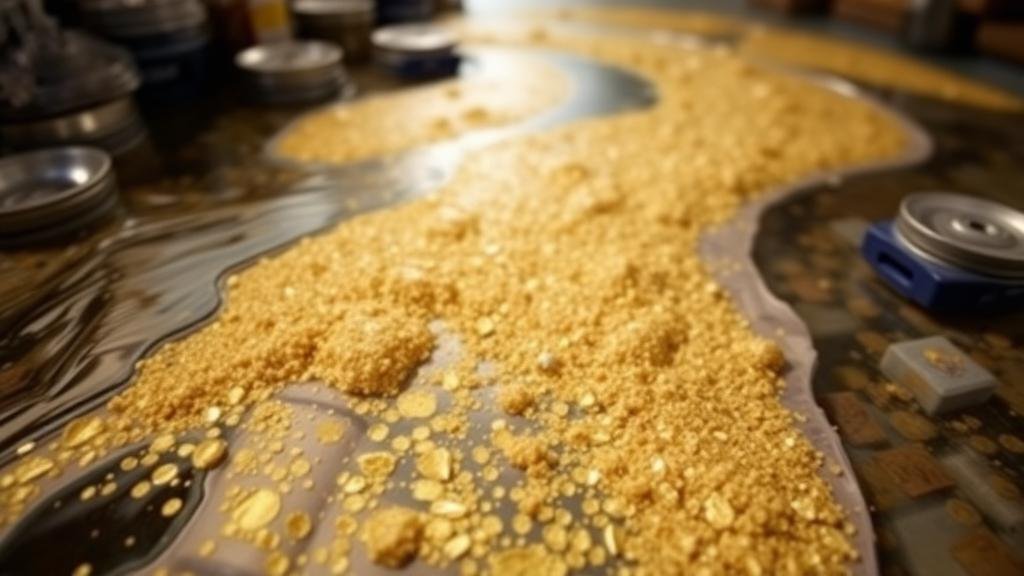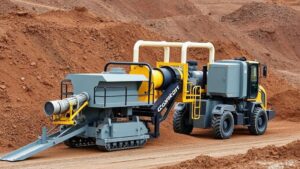Techniques for Isolating Gold From Fine Sediment in High-Energy Streams
Techniques for Isolating Gold From Fine Sediment in High-Energy Streams
Gold panning has long been a method for extracting gold particles from sediment, but as technology and our understanding of geological processes have evolved, so too have the techniques used in the isolation of gold from high-energy stream environments. In this article, we will explore various methods for extracting gold from fine sediments, discussing their scientific basis, efficiency, and real-world applications.
Understanding the Environment
High-energy streams are characterized by swift currents and turbulent waters, which can affect the deposition of gold particles significantly. Gold tends to accumulate in specific areas due to its density and the natural sorting action of flowing water. Understanding the geology of the area–such as identifying bedrock, flood plains, and eddies–is crucial for efficient gold isolation.
Techniques for Gold Isolation
The primary techniques for isolating gold from fine sediment can be classified into several categories, including physical methods, chemical methods, and mechanical separation.
Physical Methods
- Panning: This traditional method involves using a shallow, flat, round pan to separate gold from sediment through agitation and stratification. Water is added to the pan, and the sediment is swirled to allow the heavier gold particles to settle at the bottom.
- Sluicing: Sluicing employs a longer, inclined trough known as a sluice box. Water flows through the box, and as sediment is fed in, the riffles catch larger particles, allowing lighter materials–and gold–to flow away.
- Dry Washing: In arid regions, dry washing techniques use air instead of water to separate gold. This method is often used in desert environments where streams are scarce.
Chemical Methods
- Cyanidation: This method dissolves gold using cyanide solutions, followed by precipitation of gold through chemical reactions. While efficient, it poses significant environmental risks if not managed properly due to the toxicity of cyanide.
- Amalgamation: Here, gold is mixed with mercury, which forms an amalgam that can be easily separated from other materials. But, this technique too poses environmental risks and health hazards due to mercurys toxicity.
Mechanical Separation
- Gravity Separation: Devices such as shaking tables and centrifugal concentrators leverage the differences in density and particle size to separate gold from other sediments.
- Electromechanical Separation: Innovative technologies developed that use electromagnetic fields to aid in the separation of fine gold particles from sediment.
Case Studies and Applications
One notable case study in the application of these techniques is the recovery of gold along the Feather River in California. Miners have utilized sluices and highbankers, which are portable pieces of equipment that combine elements of panning and sluicing, increasing the efficiency of gold extraction.
In more industrial settings, mining companies have adopted gravity separation technology, which has greatly improved the yield of gold extraction. For example, the use of Knelson concentrators in many operations has resulted in recovery rates exceeding 95%. This method is particularly effective for processing high volumes of sediment and has a significant impact on the sustainability of gold mining.
Challenges and Considerations
When isolating gold from fine sediment in high-energy streams, several challenges must be addressed:
- Environmental Regulations: Many regions have strict regulations that limit the use of certain techniques due to their environmental impact–such as cyanidation and mercury amalgamation.
- Operational Efficiency: The economics of small-scale versus large-scale operations can greatly influence the choice of extraction method, as certain techniques are more labor-intensive and cost-prohibitive.
- Skill Level: The effectiveness of manual techniques like panning can vary greatly based on the skill and experience of the operator.
Conclusion
Isolating gold from fine sediment in high-energy streams involves a blend of traditional methods and modern technological adaptations. While each technique has its advantages and disadvantages, advancements in equipment and a deep understanding of geological processes can significantly enhance gold retrieval success rates. Before employing any method, its crucial to consider both the environmental impact and the regulatory framework overseeing gold extraction in the area of interest.
For aspiring gold prospectors, the takeaway is clear: mastering a combination of techniques and understanding the local geography are keys to successful gold isolation. Whether working in a small stream or an industrial setting, developing a skilled approach can lead to fruitful endeavors in gold mining.



